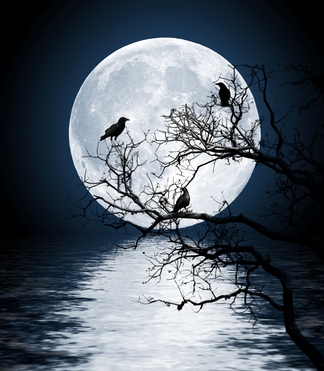Scary Stuff
Once in a Blue Moon
Are you familiar with the saying? It refers to a rare event. But, in seven days, you can witness this event if you look up into the sky at night.
A blue moon doesn’t refer to the color of the moon, although it is possible for the moon to appear blue after a volcanic eruption or large fire. Instead, it refers to the second full moon in a month. The first full moon in August 2012 was on the first day of August.
According to the original definition of a blue moon, the August 31, 2012 moon wouldn’t count. The historic definition from the 1937 Farmer’s Almanac required that there be four moons in a season for the third to be called a blue moon. Because the full moon in September occurs after the equinox, it would not count as the fourth moon.
However, James Hugh Pruett noted in Sky and Telescope Magazine in March 1946 that sometimes there is an extra full moon in a year, making for 13 full moons in a year. Pruett called the second full moon in a month the Blue Moon. The Farmer’s Almanac has now adopted Pruett’s version and classified the August 31, 2012 moon as a Blue Moon.
There are a number of beliefs that surround the full moon. Werewolves transform from humans into wolves under the full moon. Ghosts and vampires are more active. Others believe that there is an increase in lunacy among people and an increase in dog bites during the full moon. While I cannot confirm them scientifically, I wouldn’t be doing justice to Funtober if I ignored them. So be careful on August 31st.


